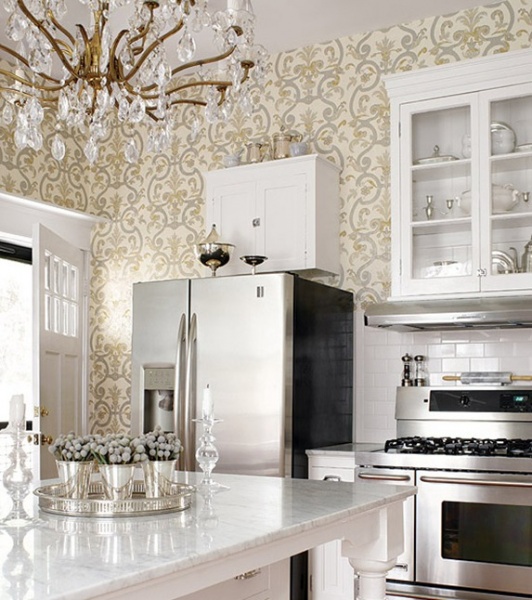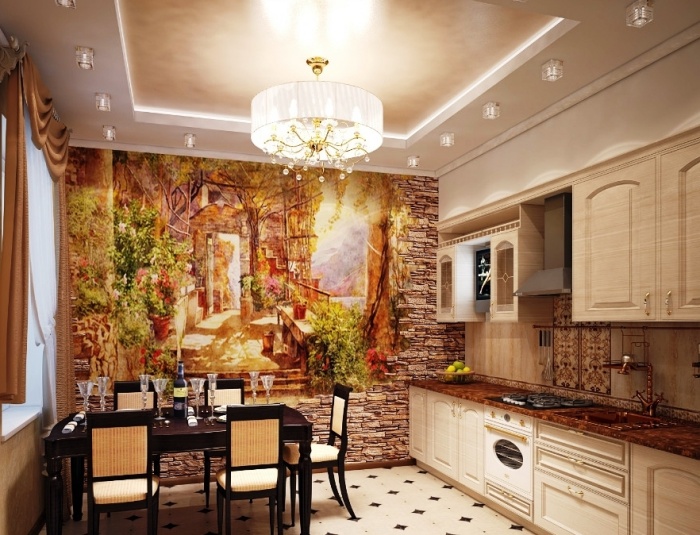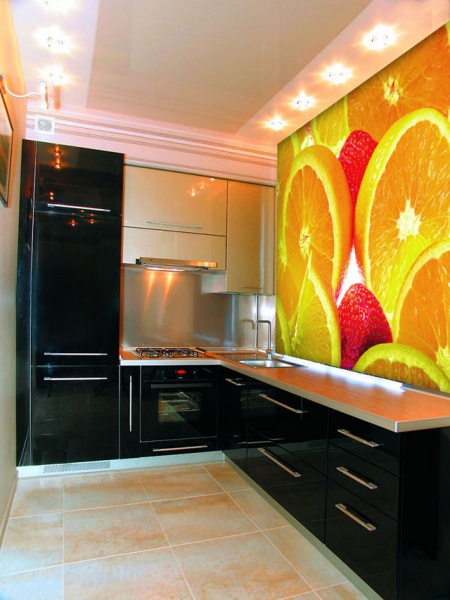What wallpaper is best for the kitchen
The best wallpaper should be used in the kitchen, so it is important to make an informed and purposeful choice of these finishing materials. We offer some useful tips on choosing finishing materials for updating the interior of the kitchen. The photo shows a variant of trellis, which will not only be suitable for the interior of this room, but will also make your kitchen a real corner of home coziness and comfort.
The walls of this room are the background that should frame the space. Wallpaper is suitable for framing the space in the room, visually increasing the space, giving the kitchen a special charm and originality. How to choose the best trellis for your kitchen.


Vinyl wallpapers
Vinyl materials that you see in the photo can be glued in the kitchen. These materials are canvases on a paper or non-woven base, their top layer has a decorative vinyl coating. There are several varieties of vinyl wall materials: hard vinyl, silkscreen, foam. Which one is better to glue in the kitchen, you decide.
Advice! Professionals advise buying silk-screen printing in the kitchen, as it will be easy for you to care for such wallpaper.

Let's highlight certain advantages that vinyl materials have. First of all, we note their high density, thanks to which you can hide minor flaws in the walls.
The materials have washable and moisture resistant properties, so you can safely wipe and clean the finished coatings. In the photo you see the option of decorating the kitchen with vinyl materials. In addition, vinyl sheets do not lose their color characteristics due to the negative effects of ultraviolet radiation.

There are no restrictions on design variability with similar kitchen interior wallpapers. If desired, you can combine several canvases, creating bizarre geometric patterns on the walls.

What are the disadvantages of these finishing materials? Vinyl walls will be airtight, so you will need to ventilate the room periodically. If you have chosen thin vinyl canvases, then you will have to plaster the walls before gluing them to the surface to be decorated. Gluing vinyl materials is much more difficult than non-woven fabrics. The reason is that after applying glue to the canvases, they are partially stretched. After the canvases are glued to the wall, their “shrinkage” occurs, as a result of which a partial deformation of the pattern is possible. Also among the significant disadvantages of such finishing materials, it is necessary to note their high cost.
![]()
Combination of materials
Which wallpaper to choose to modernize the interior of your kitchen? Professionals recommend that those who cannot make a choice in any way pay close attention to the combination of different materials. Among the fashion trends, we note the following types of combinations: vertical, horizontal, patchwork, accent.
Before you start sticking vinyl wallpaper, you must first treat the wall with a special anti-fungal compound to prevent the formation of mold under the wallpaper.

Advice! If you do not have experience covering walls with vinyl materials, use the services of a professional master. When choosing such materials on your own, try to give preference to plain canvases that do not need to be joined to a complex pattern.
When choosing finishing materials for walls, be sure to pay attention to the labeling of the wallpaper. For home use, canvases with a brush icon with three waves are suitable; professionals recommend these materials for the kitchen.

